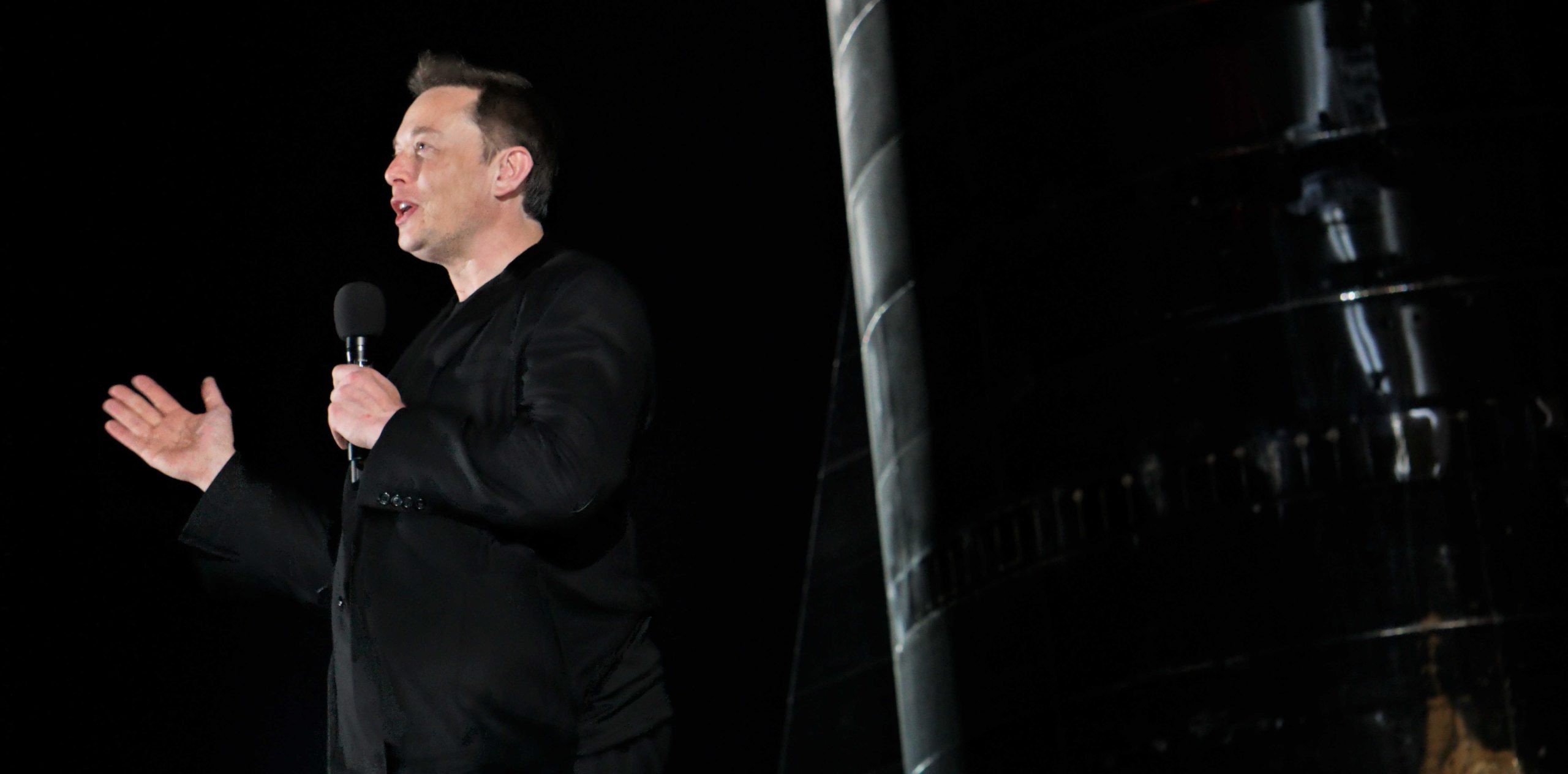
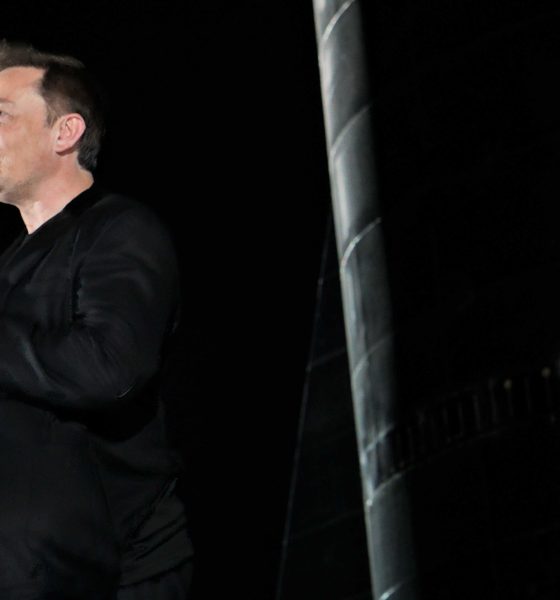
News
NASA head calls out SpaceX CEO Elon Musk over Starship event in bizarre statement
Roughly 24 hours before SpaceX CEO Elon Musk was scheduled to present an update on the company’s Starship launch vehicle development, NASA administrator Jim Bridenstine tweeted a bizarre and wholly unprovoked statement on the subject.
Seemingly equating SpaceX’s recent Crew Dragon delays with the distribution of Elon Musk’s public attention, the NASA administrator’s comment was almost universally criticized by the spaceflight community at large – and rightfully so.
First, some context. Created in 2010 and first supported with serious funding some 12-24 months later, NASA’s Commercial Crew Program (CCP) exists to replace the astronaut transport capabilities once offered by Space Shuttle and now achieved with contracts for seats on Russian Soyuz launches. Primarily the result of inept bureaucracy in NASA and Congress, the Space Shuttle was “retired” in 2011 in full knowledge that the US would have to rely on Russia to get NASA astronauts to the ISS until 2015 (at the absolute earliest).
Congress shut down multiple 2010 proposals to continue Shuttle flights until the late 2010s, choosing instead to kill the Shuttle and divert its associated funding to the expendable Ares V rocket (now the Space Launch System, SLS) and Orion crew capsule. More on that later...
Retweeted by Bridenstine’s official Twitter account, above is the absolute best-case interpretation of the NASA administrator’s comment. Although Eric Berger means well, the interpretation gives NASA far too much credit. Specifically, Bridenstine (or whoever fed him the statement) went out of his way to make it entirely one-sided in its focus on SpaceX. By all appearances, it would have never been posted if not for Elon Musk’s plans to present on Starship. Bridenstine additionally notes that “Commercial Crew is years behind schedule” and indicates that “NASA expects to see the same level of enthusiasm focused on [its] investments”.
Altogether, it’s simply impossible to interpret it as anything less than Bridenstine scolding SpaceX – and SpaceX alone – for not falling to the floor, kissing NASA’s feet, and pretending that Crew Dragon and Falcon 9 are the only things in existence. Absent from Bridenstine’s criticism was NASA’s other (and even more delay-complicit) Commercial Crew Partner, Boeing, who has yet to complete a pad abort or orbital flight test of its Starliner spacecraft. SpaceX completed Crew Dragon’s pad abort in 2015 and completed a flawless orbital flight test in March 2019.
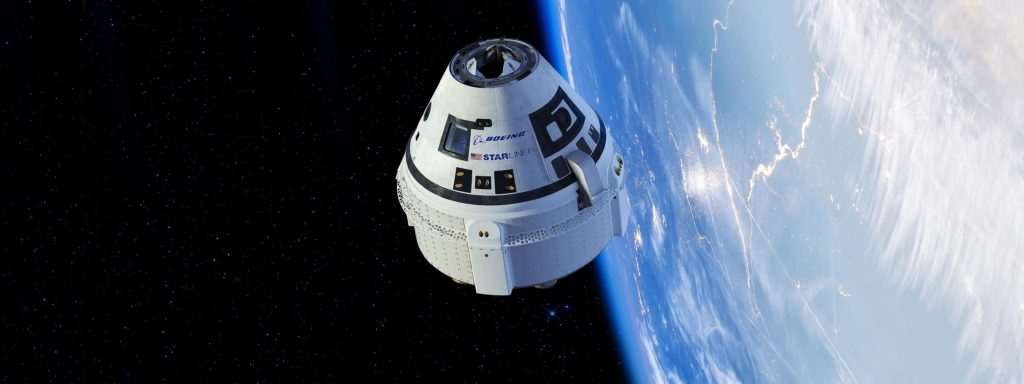
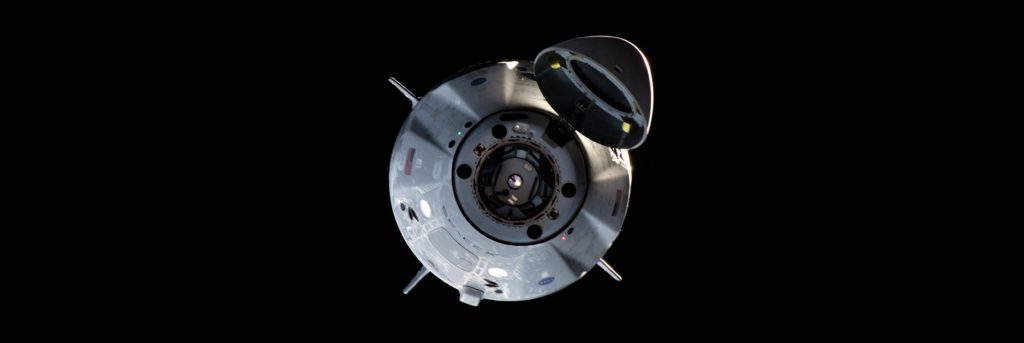
In essence, Bridenstine is publicly implying that SpaceX needs to stop being (or appearing to be) distracted by Starship and focus 100% on Crew Dragon. Boeing was not mentioned, despite being a minimum of six months behind SpaceX and dramatically more ‘distracted’ in the Bridenstine-style interpretation of the word. For reference, Boeing is a publicly-traded company with 150,000 employees, annual revenue of more than $100B, and a market cap of $206B. Boeing has 14 subsidiaries, a handful of which are involved in spaceflight, and has no less than one or two dozen products that are each more fiscally important to shareholders and board members than Starliner.
Compared to Boeing’s annual ~$100B revenue, the entirety of the Starliner development program – from the drawing board in 2010 to crewed, orbital spaceflight sometime in 2020 – is ~$4.8B. On the scale of corporate focus, Starliner has likely been a blip at most in 2019, with the company probably far more focused on the systematic organizational failures that lead to the deaths of hundreds of people in two near-identical 737 MAX crashes. Alas, NASA administrator Jim Bridenstine did not release a statement publicly implying that Boeing needs to devote the “same level of enthusiasm” to Starliner after the second fatal 737 MAX crash in March 2019. Nor did Bridenstine release a statement charging Boeing with a lack of focus after continuous reports of issues with the company’s KC-46 Pegasus tanker program, nor Boeing’s recent $9.2B US Air Force trainer jet contract, or myriad other corporate focuses.
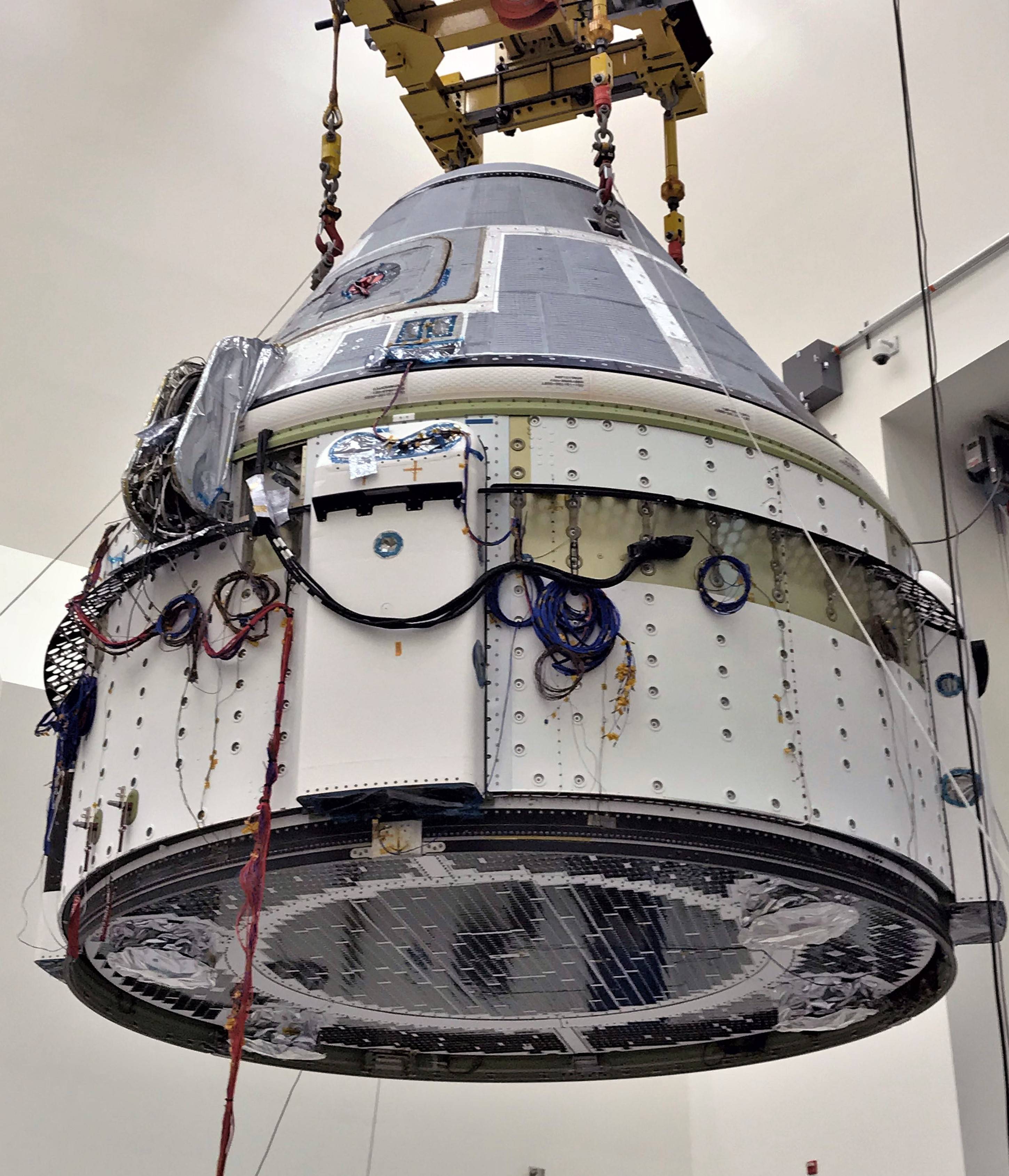
On the other hand, as Musk noted in his relatively subtle September 28th responses to Bridenstine’s implicitly derisive comment, something like 50-80% of the entirety of SpaceX’s workforce and resources are focused on Crew Dragon, the Falcon 9 rockets that will launch it, or a combination of both. At present, Starship is – at most – a side project, even if its strategic importance to SpaceX is hard to exaggerate. The same is largely true for Starlink, SpaceX’s ambitious internet satellite constellation program. It may be true that Starship will eventually make Crew and Cargo Dragon (as well as Falcon 9 and Falcon Heavy) wholly redundant, but that is likely years away and SpaceX will support NASA – as it is contractually required to – for as long as the space agency has vested interest in using Crew Dragon.
At the same time, NASA has explicitly and publicly chosen to prioritize safety over schedule with the Commercial Crew Program, accepting the possibility of delays and cost overruns to ensure that SpaceX and Boeing can build the safest spacecraft possible.
In a September 28th interview with CNN, Musk bluntly noted that the hardware was – at this point in time – more or less ready for flight and will be on-site at SpaceX’s Pad 39A Florida launch site within the next two months. According to Musk, from then on, any additional launch delays can almost entirely be attributed to the paperwork and reviews NASA must complete before giving SpaceX the go-ahead. If Bridenstine wants SpaceX to launch astronauts sooner, one – and possibly the only – solution is to tackle the roadblocks created by NASA’s own self-enforced red tape. The question, then, is whether Bridenstine wants to cut away red tape that may (or may not) be there for good reason.
When the pot calls the kettle black
Detached from whining about a contractor’s CEO presenting about a non-NASA program, complaining about Commercial Crew delays is at least slightly more reasonable. Originally intended to launch as early as 2015, Congress systematically underfunded the Commercial Crew Program by more than 50% for over half a decade, dispersing $2.4B of the $5.8B NASA requested from 2011 to 2016. Unsurprisingly, this completely upended Boeing and SpaceX development schedules. By September 2014, SpaceX aimed to have Crew Dragon certified by NASA for astronaut transport before the end of 2017, but even then, NASA already saw that schedule as overly optimistic.
It would be another two years before Congress began to seriously fund Commercial Crew at its requested levels, beginning in FY2016. In response to Bridenstine, former NASA deputy administrator Lori Garver noted that over the ~5 years Congress consistently withheld hundreds of millions of dollars of critical funds from Commercial Crew, NASA’s SLS rocket and Orion spacecraft were just as consistently overfunded above and beyond their budget requests. From 2011 to 2016 alone, SLS and Orion programs requested $11B and received an incredible $16.3B (148%) from Congress, while Commercial Crew requested $5.8B and received $2.4B (41%).
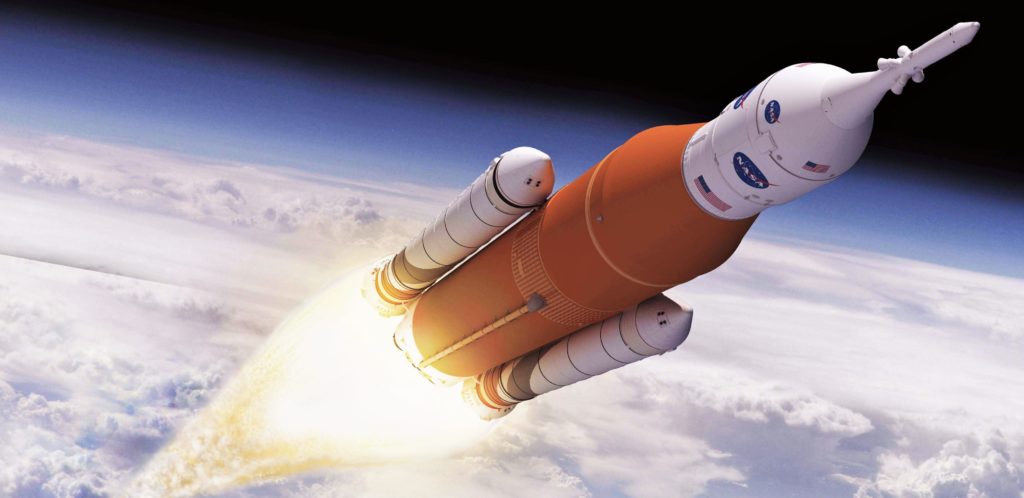
Ironically, despite literally receiving almost seven times as much funding as Crew Dragon and Starliner, SLS and Orion are arguably just as – if not more – delayed than their commercial brethren. Originally intended to launch an uncrewed test flight in 2017, there is now little to no chance that that mission (known then as EM-1 and now as Artemis-1) will launch before 2022, a delay of roughly half a decade. The cost of the SLS/Orion program recently crested $30B, a figure likely to grow to ~$40B before it has conducted a single launch. Of that funding, approximately a third has gone to Boeing, the primary contractor responsible for NASA’s comically-delayed SLS Core Stage – the orange booster pictured above.
The Commercial Crew development program will likely cost NASA $8B total over 9-10 years and produce two clean-sheet, high-performance, (relatively) low-cost crewed spacecraft. After their demonstration launches are completed, NASA will transition to fixed-price service contracts with SpaceX and Boeing to routinely send astronauts to the ISS several times per year.
Put simply, if Bridenstine actually cared about defending “the investments of the American taxpayer” more than wielding their sanctity as a political weapon, he wouldn’t have folded like a house of cards at the slightest resistance to his attempts to cull SLS/Orion delays and cost overruns, and he certainly wouldn’t be wasting breath complaining about what SpaceX’s CEO is or isn’t talking about.
Check out Teslarati’s Marketplace! We offer Tesla accessories, including for the Tesla Cybertruck and Tesla Model 3.

News
Tesla dispels reports of ‘sales suspension’ in California
“This was a “consumer protection” order about the use of the term “Autopilot” in a case where not one single customer came forward to say there’s a problem.
Sales in California will continue uninterrupted.”

Tesla has dispelled reports that it is facing a thirty-day sales suspension in California after the state’s Department of Motor Vehicles (DMV) issued a penalty to the company after a judge ruled it “misled consumers about its driver-assistance technology.”
On Tuesday, Bloomberg reported that the California DMV was planning to adopt the penalty but decided to put it on ice for ninety days, giving Tesla an opportunity to “come into compliance.”
Tesla enters interesting situation with Full Self-Driving in California
Tesla responded to the report on Tuesday evening, after it came out, stating that this was a “consumer protection” order that was brought up over its use of the term “Autopilot.”
The company said “not one single customer came forward to say there’s a problem,” yet a judge and the DMV determined it was, so they want to apply the penalty if Tesla doesn’t oblige.
However, Tesla said that its sales operations in California “will continue uninterrupted.”
It confirmed this in an X post on Tuesday night:
This was a “consumer protection” order about the use of the term “Autopilot” in a case where not one single customer came forward to say there’s a problem.
Sales in California will continue uninterrupted.
— Tesla North America (@tesla_na) December 17, 2025
The report and the decision by the DMV and Judge involved sparked outrage from the Tesla community, who stated that it should do its best to get out of California.
One X post said California “didn’t deserve” what Tesla had done for it in terms of employment, engineering, and innovation.
Tesla has used Autopilot and Full Self-Driving for years, but it did add the term “(Supervised)” to the end of the FSD suite earlier this year, potentially aiming to protect itself from instances like this one.
This is the first primary dispute over the terminology of Full Self-Driving, but it has undergone some scrutiny at the federal level, as some government officials have claimed the suite has “deceptive” naming. Previous Transportation Secretary Pete Buttigieg was vocally critical of the use of the name “Full Self-Driving,” as well as “Autopilot.”
News
New EV tax credit rule could impact many EV buyers
We confirmed with a Tesla Sales Advisor that any current orders that have the $7,500 tax credit applied to them must be completed by December 31, meaning delivery must take place by that date. However, it is unclear at this point whether someone could still claim the credit when filing their tax returns for 2025 as long as the order reflects an order date before September 30.

Tesla owners could be impacted by a new EV tax credit rule, which seems to be a new hoop to jump through for those who benefited from the “extension,” which allowed orderers to take delivery after the loss of the $7,500 discount.
After the Trump Administration initiated the phase-out of the $7,500 EV tax credit, many were happy to see the rules had been changed slightly, as deliveries could occur after the September 30 cutoff as long as orders were placed before the end of that month.
However, there appears to be a new threshold that EV buyers will have to go through, and it will impact their ability to get the credit, at least at the Point of Sale, for now.
Delivery must be completed by the end of the year, and buyers must take possession of the car by December 31, 2025, or they will lose the tax credit. The U.S. government will be closing the tax credit portal, which allows people to claim the credit at the Point of Sale.
🚨UPDATE: $7,500 Tax Credit Portal “Closes By End of Year”.
This is bad news for pending Tesla buyers (MYP) looking to lock in the $7,500 Tax Credit.
“it looks like the portal closes by end of the year so there be no way for us to guarantee the funds however, we will try our… pic.twitter.com/LnWiaXL30k
— DennisCW | wen my L (@DennisCW_) December 15, 2025
We confirmed with a Tesla Sales Advisor that any current orders that have the $7,500 tax credit applied to them must be completed by December 31, meaning delivery must take place by that date.
However, it is unclear at this point whether someone could still claim the credit when filing their tax returns for 2025 as long as the order reflects an order date before September 30.
If not, the order can still go through, but the buyer will not be able to claim the tax credit, meaning they will pay full price for the vehicle.
This puts some buyers in a strange limbo, especially if they placed an order for the Model Y Performance. Some deliveries have already taken place, and some are scheduled before the end of the month, but many others are not expecting deliveries until January.
Elon Musk
Elon Musk takes latest barb at Bill Gates over Tesla short position
Bill Gates placed a massive short bet against Tesla of ~1% of our total shares, which might have cost him over $10B by now

Elon Musk took his latest barb at former Microsoft CEO Bill Gates over his short position against the company, which the two have had some tensions over for a number of years.
Gates admitted to Musk several years ago through a text message that he still held a short position against his sustainable car and energy company. Ironically, Gates had contacted Musk to explore philanthropic opportunities.
Elon Musk explains Bill Gates beef: He ‘placed a massive bet on Tesla dying’
Musk said he could not take the request seriously, especially as Gates was hoping to make money on the downfall of the one company taking EVs seriously.
The Tesla frontman has continued to take shots at Gates over the years from time to time, but the latest comment came as Musk’s net worth swelled to over $600 billion. He became the first person ever to reach that threshold earlier this week, when Tesla shares increased due to Robotaxi testing without any occupants.
Musk refreshed everyone’s memory with the recent post, stating that if Gates still has his short position against Tesla, he would have lost over $10 billion by now:
Bill Gates placed a massive short bet against Tesla of ~1% of our total shares, which might have cost him over $10B by now
— Elon Musk (@elonmusk) December 17, 2025
Just a month ago, in mid-November, Musk issued his final warning to Gates over the short position, speculating whether the former Microsoft frontman had still held the bet against Tesla.
“If Gates hasn’t fully closed out the crazy short position he has held against Tesla for ~8 years, he had better do so soon,” Musk said. This came in response to The Gates Foundation dumping 65 percent of its Microsoft position.
Tesla CEO Elon Musk sends final warning to Bill Gates over short position
Musk’s involvement in the U.S. government also drew criticism from Gates, as he said that the reductions proposed by DOGE against U.S.A.I.D. were “stunning” and could cause “millions of additional deaths of kids.”
“Gates is a huge liar,” Musk responded.
It is not known whether Gates still holds his Tesla short position.








